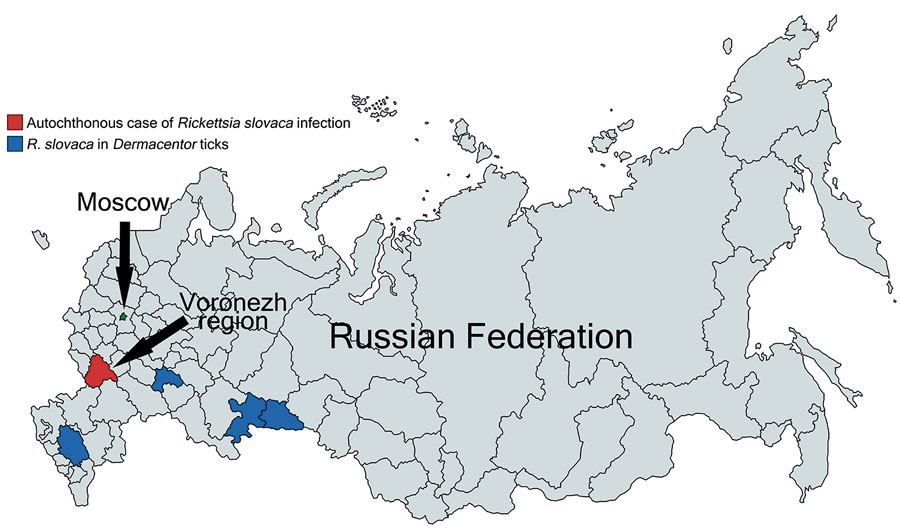Volume 27, Number 10—October 2021
Research Letter
Autochthonous Case of Rickettsia slovaca Infection in Russia
Figure

Figure. Regions in Russia where Rickettsia slovaca was detected only in ticks and the region where an autochthonous human case of R. slovaca infection was registered.
Page created: July 15, 2021
Page updated: September 19, 2021
Page reviewed: September 19, 2021
The conclusions, findings, and opinions expressed by authors contributing to this journal do not necessarily reflect the official position of the U.S. Department of Health and Human Services, the Public Health Service, the Centers for Disease Control and Prevention, or the authors' affiliated institutions. Use of trade names is for identification only and does not imply endorsement by any of the groups named above.